
Five Things Stephanie Tyree Learned About Community Development and Leading a WV Non-Profit
Stephanie Tyree shares 5 powerful lessons from 13 years of leading WV’s community development movement and building lasting change across small towns.
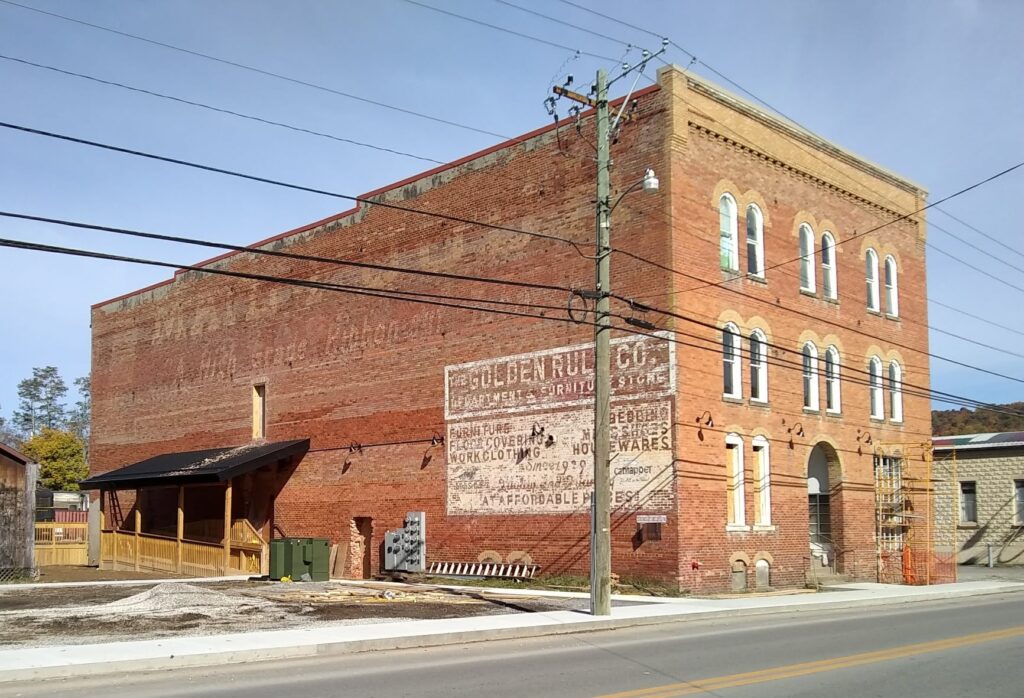
BY TAYLOR BENNETT, DIRECTOR OF COMMUNITY-BASED POLICY
This year, West Virginia became one of only a handful of states that have made their State Historic Tax Credit (SHTC) permanent. The SHTC helps make the rehabilitation of historic properties, many of which are in rural downtowns, more financially viable.
So, how are property owners in small towns using the SHTC to revitalize downtowns in the mountain state? We talked to Dustin Smith and Emily Wilson-Hauger of Woodlands Development Group and Mike Gioulis, a Historic Preservation Consultant to find out. Dustin, Emily, and Mike were part of a team of folks who used the SHTC to rehabilitate the Golden Rule Building in downtown Belington, and have worked on countless projects like this across the state. Here’s what they had to say:
We’ve seen how the State Historic Tax Credit can be helpful in West Virginia’s larger cities. Can the credit be useful for redevelopment in smaller communities? Can you give an example?
Dustin: The SHTC can be used anywhere, really. The Golden Rule building in Belington is a great example. Belington is close to as small as it comes, so if it can work there, it can work anywhere. It’s also an example of a project in a rural town that wouldn’t have happened without the SHTC.
Mike: Yeah, the difficulty in small towns is that projects are smaller, so they don’t attract investors like large developments would, but that doesn’t mean it isn’t possible. In order to use the credit, property owners have to have an active financial interest in the property. This means that in small towns, the tax credit could be particularly useful for business owners who also own the property in which their business is located.
The Dairy Queen on High Street in Morgantown is a great example of this. It’s not a small town but it was a small project. The owner’s business is in a building they own, so they were able to use the credits to rehabilitate the building.
What kinds of redevelopment projects make good candidates for using the state historic tax credit?
Dustin: In order to qualify for the credit, the property has to be listed on the National Register of Historic Places or be in a historic district. The Golden Rule Building wasn’t initially on the list, so getting it added was part of the process. It was eligible to be listed because the building played a significant role in the mercantile history of the area and it has a really cool, water powered elevator.
Mike: You also want to consider the plan for reuse. Projects which require massive changes to the building generally don’t qualify. For example, the SHTC is often a good fit for small scale residential buildings in the hospitality industry because you don’t have to change a building that much to retrofit it as a restaurant, inn, or event space.
What kind of impact has this project had on this community, specifically?
Dustin: So far, there are 10 new homes in a market where there is a complete housing shortage. The first floor was set up to be a marketplace, but hasn’t been filled due to covid. In the meantime, the community has been using this space for pop-up events.
Emily: Yeah, the housing piece is really important as well because it sets a standard for what affordable housing can look like in Barbour County.
Mike: In addition to contributing to existing community development plans for Belington, the Golden Rule also elevates the tone of the town by not being an eyesore right when people come into town and it sets a standard of maintenance and character for other downtown property owners.
Dustin:That’s right. If we hadn’t come along, that building would likely have been torn down many years ago. Rehabbing buildings like this one is key for a community like Bealington which has lost a lot of historic structures already.
What are some actionable steps small communities can take to attract investment? Where should they start?
Mike: I think the first thing people can do is to educate themselves about the funding streams that are available for redevelopment. Then, a great place to start is to create a building inventory to see what structures are available to then begin marketing to potential developers. And there are resources out there to support this kind of work.
Dustin: I would encourage people to remember that when you take on this kind of community development, it’s a long game. It took us about 7 or 8 years to go from planning to rehabilitation to placing the building in service last year.
Emily: Our mission at Woodlands is to do projects that reflect the goals held by the community we’re working in. The Golden Rule probably wasn’t a project we would have taken on by ourselves, but it was very important to the community and certainly no for-profit developer would have been interested in it.To Mike’s point, there is a lot of Technical Assistance that’s available through our organization and others to help with funding, inventories, et cetera. So, seek out support from organizations that can help get you moving while prioritizing community goals.
Want to know more?
If you’re wondering whether the SHTC can be an important part of a reuse plan for a building you’re working on, the Small Business Development Center is there to help. Reach out to Shannon Mitchell at Shannon.H.Mitchell@wv.gov. Or, you can reach out to Susan Pierce at the State Historic Preservation Office at susan.m.pierce@wv.gov.

Stephanie Tyree shares 5 powerful lessons from 13 years of leading WV’s community development movement and building lasting change across small towns.
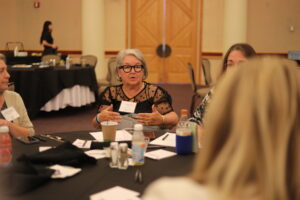
People often get involved with community development due to a desire to make their community better. This desire is rooted in bringing
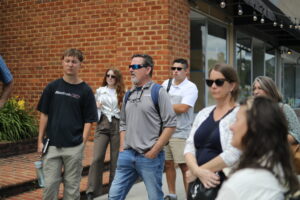
Community development is a group effort, and knowledge sharing is crucial in moving projects forward. Peter Buttler, a professor and extension specialist

Our work is made possible thanks to incredible partnerships with other community development organizations across the state. From local economic development authorities (EDAs) to state level nonprofits working to uplift communities, all of our partners are crucial in making West Virginia the best it can possibly be by working together.
One partner that made our work truly profound this year is Coalfield Development. For years, Coalfield Development has worked to rebuild Appalachian communities by inspiring the courage to grow, activating the creativity to innovate, and cultivating communities of opportunity in central Appalachia.
We are proud to be part of Coalfield Development’s ACT Now Coalition, a broad network of organizations working hand-in-hand to uplift communities throughout Southern West Virginia. The ACT Now Coalition is infusing more than $63 million into programs to help communities using business development, building revitalization, and so much more.
The Hub is leading the Community and Business Resilience Initiative as part of the larger ACT Now Coalition to bring other partners with us to build up community and business resilience in the Coalition’s footprint.
“For decades, we’ve known the economy of southern West Virginia needs diversification. Some progress has been made on this goal, but not nearly enough,” Brandon Dennison, CEO of Coalfield Development, said about the ACT Now Coalition. “ACT Now constitutes a tangible opportunity to take a major leap forward in this generational challenge to become a vibrant, growing, diversified economy. In the wake of continued coal-job losses, nothing could be more important for our region.”
Our partnership with Coalfield Development is giving us a chance to take our work to new communities and to build upon our years of experience. Working alongside Coalfield Development in this large undertaking to bring $63.8 million to communities in Southern West Virginia is validation that the work happening to uplift West Virginia communities continues to grow.
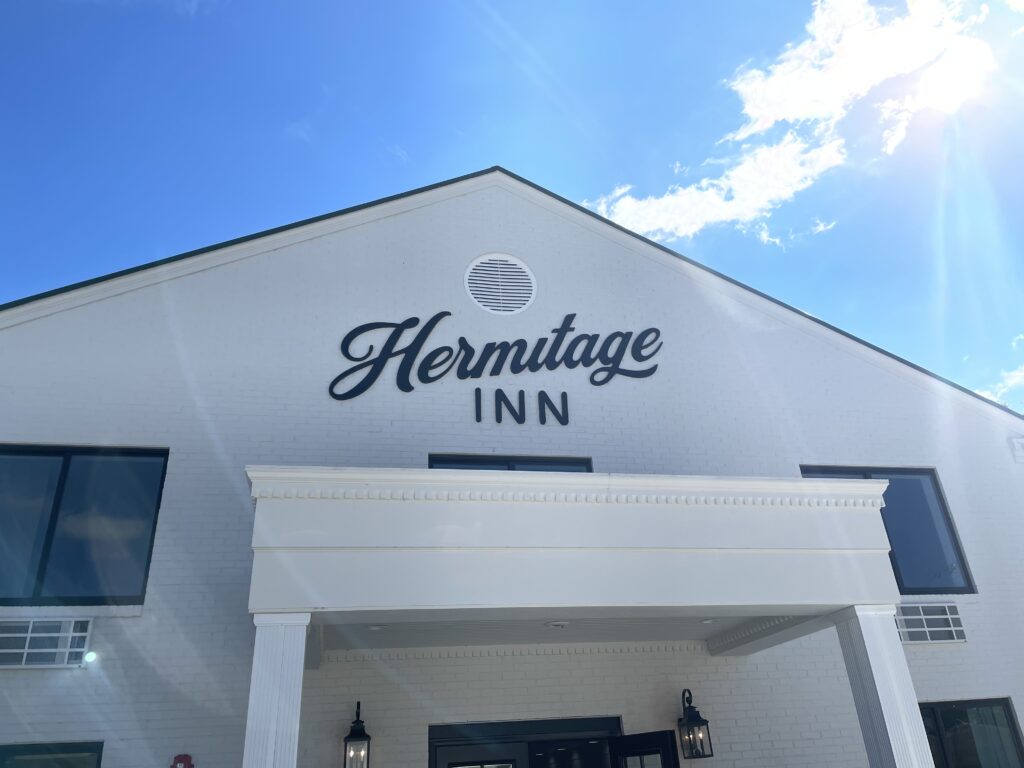
The Hub works alongside communities across West Virginia coaching community teams as they come together to make transformative changes in their towns. In 2022, one town stands out for its continued work and unwavering commitment to making its community a place where people want to live, work, play, and visit.
Petersburg, located in Grant County at the northernmost point of the Mon Forest, is filled with community members who want to make their town a destination. Not only have businesses opened, and stayed open, the town has transformed the way they present to the world through rebranding and outdoor recreational development.
As part of the HubCAP IV program, Petersburg utilized its technical assistance to push forward with projects to bring transformative change to its community. Part of the work Petersburg worked towards was creating plans to pave a hike and bike trail that runs along the Petersburg dike. The proposed trail will run approximately three miles along the Petersburg dike and will include multiple entrances for walkers and bikers. The group secured a $25,000 grant from Senator Hamilton, which was matched locally by the City of Petersburg, the County Commission, and the Board of Education, each adding an equal share to bring the total to $50,000.
This year, Petersburg witnessed a major upgrade to one of the town’s most iconic and historic structures: The Hermitage Inn. The hotel, which dates back to 1841, has been renovated and once again welcomes guests to stay the night and have a nice dinner in the restaurant.
The Hermitage Inn is the first project initiated and completed as part of the Downtown Appalachia: Revitalizing Recreational Economies (DARRE) program. Seeing the old hotel returned to its majesty has been an incredible development for Petersburg adding another jewel to the downtown area.
Seeing Hub communities come together to create transformative change thrills us. Community members are the subject matter experts on what their towns need. Our commitment to accompaniment and walking alongside communities as they do the hard work guides us in our work. Celebrating their victories with them gives us a moment to uplift those making the work happen.
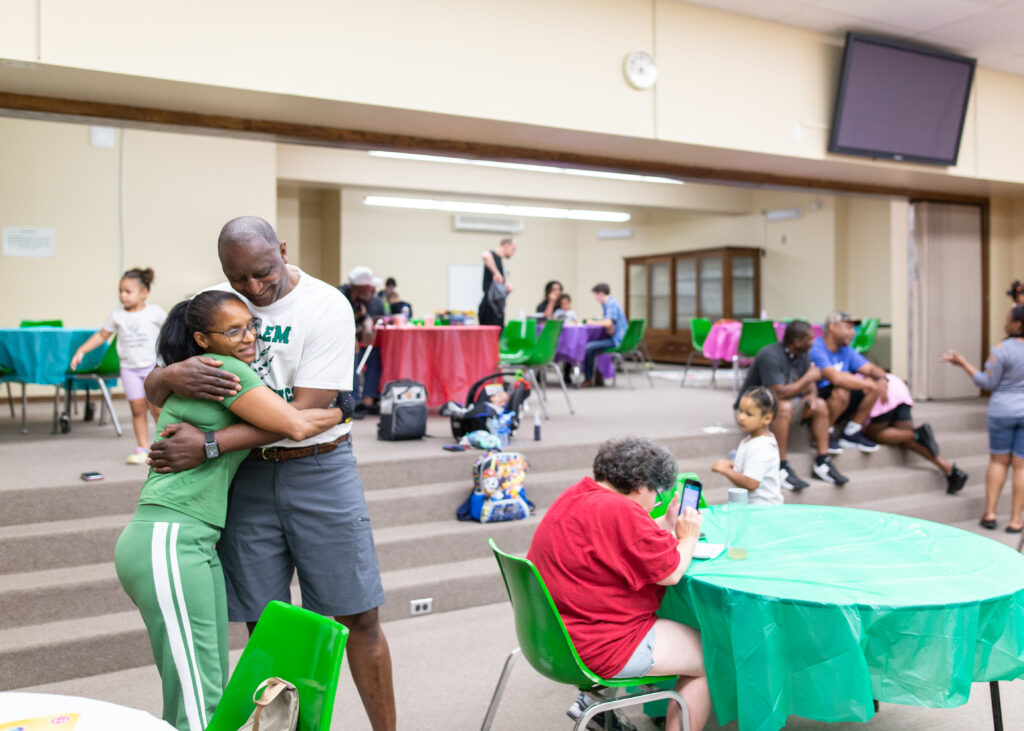
Since 2018, The Hub has been working diligently to bring Diversity, Equity, and Inclusion into our work. For years, the organization has been working internally to expand on one of our core values: “We believe diversity creates strength.”
We believe that now is a time when we must work from the ground up to commit to long-term efforts to build power through leadership development, programmatic strategies, and partnerships that commit to building power and advancing racial equity.
Looking back at our organizational history, we acknowledge that our work in rural communities with populations of less than 15,000 has not reached a diverse cross-section of people in West Virginia. Because of this, we began to ask, “Who isn’t here?” when examining our involvement in communities. The social unrest in 2020 led us to examine our role in white supremacy, ableism, classism, and gender discrimination, and the ways we have perpetuated unjust systems in our communities and across West Virginia.
Since 2020, our equity journey has included a staff racial equity learning series, making internal commitments to increasing our hiring and retainment of diverse staff including creating full-time Racial Equity Fellowship and VISTA positions, committing to increased coaching for rural communities of color across the state, and tackling the inherent challenges of advancing equity across the community development field within a highly rural, majority white state where Black and brown leadership has been historically marginalized and under-invested.
Our belief in the power of local people to see the value and the potential of their place, and of each other, is at the core of our belief in the potential we have to build power in West Virginia to advance racial equity, inclusion, and accessibility while disrupting systems that have historically excluded some communities.
We are committed to engaging in conversations to uplift communities and leaders of color to move from talk to action on why race matters in West Virginia as we work to disrupt these systems. We will support investment in Black-led organizations and rural Black leadership. And we are committed to driving public and private investments into these spaces, both organizational and geographic.
A core team led by Unleash Tygart, Inc participated in Opportunity Appalachia, receiving technical assistance to support a community development project located in an Opportunity Zone.
Core teams led by Thundercloud, Inc. and the City of Huntington participated in Opportunity Appalachia, receiving technical assistance to support community development projects located in Opportunity Zones.
A core team led by Crawford Holdings, LLC participated in Opportunity Appalachia, receiving technical assistance to support a community development project located in an Opportunity Zone.
Residents participated in round 4 of The Hub’s capstone Communities of Achievement program with a focus on building local recreational economies.
Residents participated in round 4 of The Hub’s capstone Communities of Achievement program with a focus on building local recreational economies.
Residents participated in round 4 of The Hub’s capstone Communities of Achievement program with a focus on building local recreational economies.
Residents participated in round 4 of The Hub’s capstone Communities of Achievement program with a focus on building local recreational economies.
Residents participated in round 4 of The Hub’s capstone Communities of Achievement program with a focus on building local recreational economies.
A core team led by Woodlands Development Group also participated in Opportunity Appalachia, receiving technical assistance to support a community development project located in an Opportunity Zone.
Residents participated in round 4 of The Hub’s capstone Communities of Achievement program with a focus on building local recreational economies. Read their community case study.
Residents participated in the Blueprint Communities* program to engage their neighbors and co-create strategic plans for their future.
Residents participated in the Blueprint Communities* program to engage their neighbors and co-create strategic plans for their future. Read their community case study.
Residents participated in the Blueprint Communities* program to engage their neighbors and co-create strategic plans for their future. Watch their community documentary.
Residents participated in the Blueprint Communities* program to engage their neighbors and co-create strategic plans for their future. Read their community case study.
Residents participated in the Blueprint Communities* program to engage their neighbors and co-create strategic plans for their future.
Residents participated in the Blueprint Communities* program to engage their neighbors and co-create strategic plans for their future.
Residents participated in the Cultivate WV program to kickstart community and economy building. Read their community case study.
Residents participated in the Cultivate WV program to kickstart community and economy building. Read their community case study.
It has been a year of abundant opportunities and partnerships across the state, and a year that has pushed all of us to work harder, faster, and smarter – together.
At The Hub, we say that “the work works when you put in the work.” This means that our approach to community-based development, and individual leadership development, really does transform local communities, especially when we all work together for the same goal, and stay committed to working together for the long haul.
In 2023, we continued to be amazed at the local leadership, drive and innovation we saw in communities throughout the state that are building locally-driven development from the ground up. Our network of community leaders, partners and opportunities keeps growing and shows no signs of slowing in 2024!
We extend our deepest gratitude to everyone for being part of the larger Hub community as we reflect on this year’s deep impact in West Virginia communities through our work. We are thrilled to have champions who believe in our mission that every community in West Virginia can achieve economic growth when they are supported with the tools and training they need to lead and spark positive change.
We believe strongly in the fact that putting in the work yourself to improve your neighborhood, your town, and our state is where true transformational change happens. With strategic partners and thought leaders like you in the work with us, we continue to be able to walk alongside community teams as they do the work to uplift their communities.
Thank you to all of the community teams and leaders who are brave enough to keep showing up every day, and putting in thousands of hours of volunteer time to support your communities and the entire state. Your determination in the face of difficult work and far-off successes is something to applaud yourself for – and to celebrate.
Whether you’re volunteering on the ground in your community, sharing our stories of hope with your friends and neighbors, or attending a virtual event with The Hub, your participation in our work is what keeps it going. Thank you for all your work and support this past year, and we are excited to continue in the work with you in 2024!
In Continued Accompaniment,